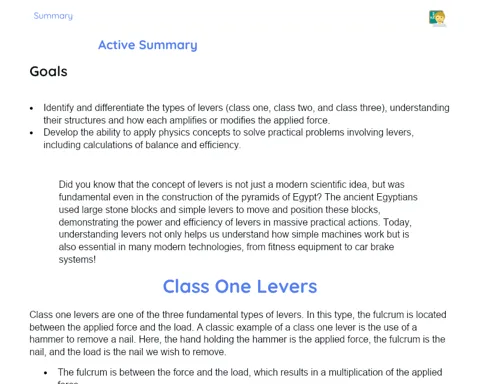Plane Mirrors: Reflecting Knowledge and Practical Applications
Objectives
1. Recognize what a plane mirror is.
2. Verify the equality of distances between the plane mirror and the image and between the mirror and the object.
3. Solve practical problems involving plane mirrors.
Contextualization
Imagine being in a room of mirrors where each reflection seems to be a portal to another dimension. The study of plane mirrors allows us to understand how these images are formed and why we see the world as we do. These concepts are fundamental not only in physics but also in various practical applications, from architecture to interior design, where the manipulation of mirrors can completely transform an environment. Additionally, plane mirrors are used in many areas, such as in the manufacturing of optical instruments, cameras, and even in certain types of security sensors.
Relevance of the Theme
Plane mirrors are essential components in various technologies and practical applications. They are fundamental in architectural designs to create the illusion of larger and brighter spaces, crucial in optical devices such as periscopes and cameras, and indispensable in augmented and virtual reality technologies, which rely on the precise understanding of reflections and images to create immersive and realistic experiences.
Definition of Plane Mirror
A plane mirror is a smooth reflective surface that forms virtual images of objects in front of it. The reflected light follows the law of reflection, where the angle of incidence equals the angle of reflection.
-
Smooth reflective surface.
-
Forms virtual images.
-
Follows the law of reflection: angle of incidence equals angle of reflection.
Image Formation in Plane Mirrors
Images formed in plane mirrors are always virtual, upright, and have the same size as the object. The distance from the image to the mirror is equal to the distance from the object to the mirror.
-
Virtual and upright images.
-
Image size equal to object size.
-
Distance from image to mirror equal to distance from object to mirror.
Properties of Formed Images
The images formed by plane mirrors are specular, meaning the right side of the object becomes the left side of the image and vice versa. This phenomenon is known as lateral inversion.
-
Specular images.
-
Lateral inversion: right-left.
-
Important for understanding visual perception in mirrors.
Practical Applications
- Architecture: Use of plane mirrors to create the illusion of larger and brighter spaces.
- Optical Instruments: Construction of periscopes and other devices that depend on light reflection.
- Augmented Reality: Development of technologies that require an understanding of reflections and image formation to create immersive experiences.
Key Terms
-
Plane Mirror: Smooth reflective surface that forms virtual images.
-
Virtual Image: Type of image that cannot be projected onto a screen because there is no real convergence of light rays.
-
Lateral Inversion: Phenomenon where the right side of the object becomes the left side of the image and vice versa.
Questions
-
How can understanding the properties of plane mirrors be applied in your daily life?
-
In what ways can knowledge about plane mirrors be useful in different professional careers?
-
What are the challenges in applying the concepts of plane mirrors in emerging technologies such as augmented reality?
Conclusion
To Reflect
Throughout this lesson, we explored the fascinating theory of plane mirrors and their various practical applications. We understood how images are formed and the importance of the properties of mirrors in different contexts, from architecture to augmented reality technology. Reflecting on how these concepts influence our visual perception and how they can be applied in the job market helps us appreciate the study of physics and see its countless possibilities in future professions.
Mini Challenge - Exploring Reflections with a Plane Mirror
This mini-challenge aims to consolidate understanding of image formation in plane mirrors through a practical and fun activity.
- Take a small plane mirror and position it vertically on a table.
- Place a small object (such as a pen or pencil) in front of the mirror, about 10 cm away.
- Observe the image of the object in the mirror and, using a ruler, measure the distance between the object and the mirror, and between the mirror and the reflected image.
- Draw a diagram representing the position of the object, the mirror, and the reflected image, indicating the measured distances.
- Write a short paragraph explaining whether the measured distances confirm the theory that the distance from the object to the mirror is equal to the distance from the image to the mirror.
- Discuss with your peers how the activity helped consolidate your understanding of image formation in plane mirrors.



